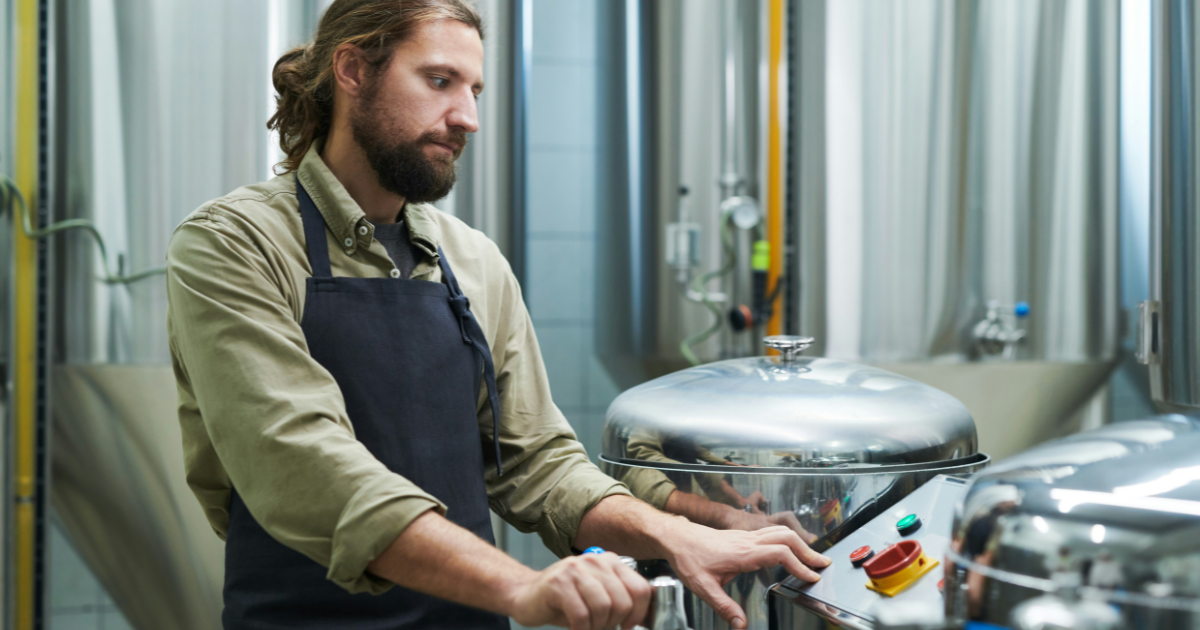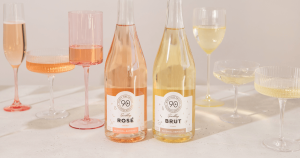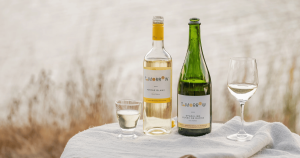By Victoria Watters
The nascent alcohol alternatives category is evolving, moving beyond imitations of traditional alcoholic drinks toward more innovative creations. Two factors seem to drive this shift. First, in a rapidly expanding competitive set (we track nearly 100 non-alcoholic gins in our database, for example), new brands need to differentiate themselves. Second, as younger consumers step into their spending power, demand for alcohol dupes seem to be dropping. Compared to older generations, they lack a nostalgic connection to conventional alcohol and are more likely to seek novel, sophisticated alternatives. For them, it might be more about stepping up from a simple soda rather than replicating something like a margarita, for which they didn’t have a taste in the first place. Let’s dive into where our category has been and where it may be heading.
The Initial Wave: Replicating Alcoholic Beverages
When non-alcoholic spirits, wines, and beers first entered the market, their primary goal was to replicate the taste and experience of alcoholic drinks. Brands like Lyre’s and Athletic Brewing gained traction by creating alternatives that mimicked classic spirits and brews. These early entrants sought to provide an option for those who wanted the ritual of drinking alcoholic drinks, without the alcohol.
This approach worked. Consumers who were moderating their alcohol intake or embracing sober curiosity appreciated being able to enjoy a familiar taste and experience without the downsides of booze. However, as the market matured, limitations of this strategy became apparent. Some of these replicas, particularly in the spirit and wine spaces, struggled to fully capture the depth and complexity of their alcoholic counterparts, leading to mixed consumer reactions.
Moving Beyond Imitation: The Case for Novelty
The industry’s next phase is being shaped by brands that prioritize originality over imitation. Ben Branson, founder of Seedlip, Seasn, and now Sylva, has been vocal about this shift, stating, “Let the big alcohol brands do their thing—that’s their lane, and they’re bound by their trademarks and legacy expectations. But new brands like ours don’t have that baggage. We have the freedom to innovate, and that’s where the real value lies.” Branson sees the future of non-alcoholic beverages as part of a broader movement, where the focus isn’t on the lack of alcohol, but on the flavors and experiences they deliver.
Branson’s latest venture, Sylva, exemplifies this philosophy by crafting non-alcoholic spirits derived from various types of wood. It’s not designed to mimic whiskey or rum. Instead, it offers complex, woody, and smoky flavors that stand on their own. Rather than trying to “replace” alcohol, they create an entirely new drinking experience. His approach also challenges traditional production models, championing hyper-local manufacturing to bring producers closer to their ingredients.
Similarly, new brand Norïe has embraced fermentation and floral botanicals to develop sophisticated, non-alcoholic blends that deliver layered flavors beyond the traditional cocktail structure. You might call this a wine occasion beverage, but it’s certainly not trying to be wine. Instead, Norïe is carving out its own space by leveraging slow fermentation to extract complex, aromatic profiles from flowers like milk thistle and chamomile. This process enhances depth and unlocks new flavors from the ingredients, offering consumers a unique experience.
Brands like these highlight a growing realization: today’s consumers are not necessarily looking for a one-to-one replacement for alcohol. They’re increasingly seeking something sophisticated and novel.
Caveats: The Success of Some Replicas and the Role of Innovation
While the non-alc space may be shifting away from replication, it is important to acknowledge that some non-alcoholic replicas can still be successful. Non-alcoholic beer, in particular, has remained a strong category due to its ability to closely mimic traditional beer. With a familiar taste and experience, it’s an easy-to-understand alternative for consumers. Additionally, the drinking occasion for beer—social gatherings, sporting events, and casual settings—remains intact, further supporting its widespread acceptance.
Moreover, non-alcoholic beers infused with caffeine or THC represent a new frontier, merging familiar formats with emerging consumer interests in functional beverages. These additions help differentiate them from traditional beer while offering new experiences for consumers seeking both taste and mind-altering effects. One excellent example of this is Tripleswitch Brewing and its recent functional Cerveza release: 5mg of THC and CBD, aptly living up to its “switch ABV for THC” motto.
Beyond non-alcoholic beer, innovation in non-alcoholic wine is also gaining momentum. Dealcoholization methods are improving. One brand, BOLLE, is pioneering new fermentation techniques to further enhance flavor and mouthfeel. This hybrid approach—where some aspects of traditional alcoholic beverages are maintained but improved through innovation—suggests that success in the non-alcoholic space is not always a binary choice between replication and novelty.
Why This Shift is Happening: Differentiation & Changing Consumer Tastes
Two key factors are driving this shift toward more novel alcohol alternatives: competition and changing consumer preferences.
- Differentiation in an Expanding Market
With the non-alcoholic beverage sector booming, new entrants are constantly launching, making it increasingly difficult for brands to stand out. As noted, there are nearly 100 non-alcoholic gins in our Dry Atlas database alone. In such a crowded landscape, offering another replica of a well-known spirit is no longer enough to capture consumer attention. Instead, brands must develop unique formulations that break new ground. This has led to more emphasis on fermentation, botanical extractions, and unexpected flavor profiles—elements that set new brands apart from the early wave of alcohol replacements.
- Changing Consumer Preferences
Younger generations do not share the same drinking habits as their predecessors. According to multiple industry reports, Gen Z drinks less alcohol than previous generations, not because they are simply replacing alcoholic drinks with non-alcoholic alternatives, but because they are shifting to different substance use and socialization behaviors entirely. Their preferences lean toward health-conscious and/or functional beverages. Products that emphasize health benefits and function appeal to this demographic far more than traditional alcohol replicas do. For many Gen Z consumers, the idea of replicating a cocktail they never enjoyed in the first place holds little appeal. Instead, what excites them is an elevated experience that looks quite different from alcohol replicas.
The Future of Non-Alcoholic Beverages
As the non-alcoholic beverage sector continues to evolve, we can anticipate growth in products that prioritize originality over imitation. This trend not only reflects changing consumer preferences but also presents an opportunity for brands to redefine the drinking experience. Success will lie in embracing creativity and catering to the adventurous palates of younger generations. By moving away from replication and focusing on novel, high-quality offerings, the industry is poised to thrive in a market that increasingly values uniqueness.






